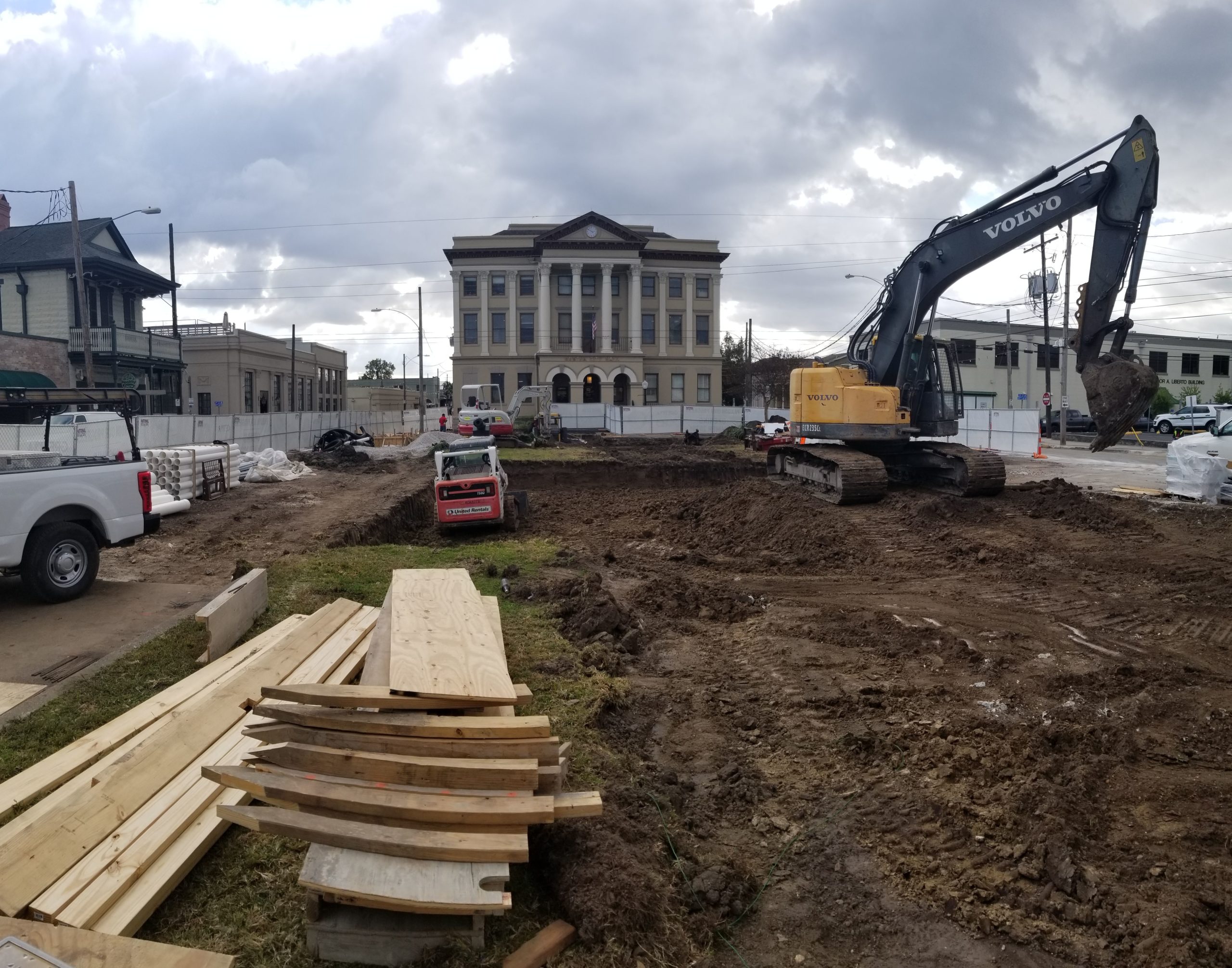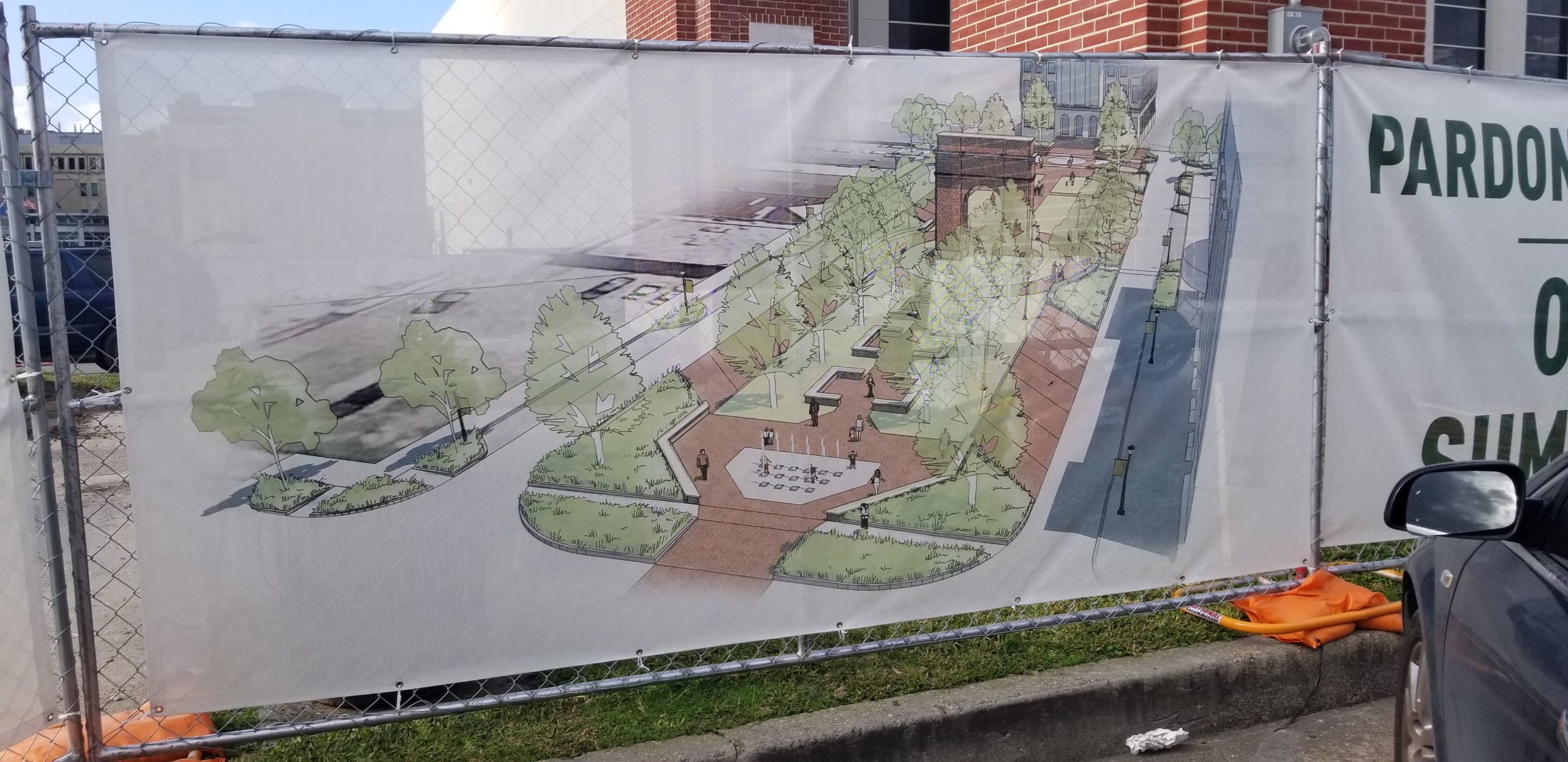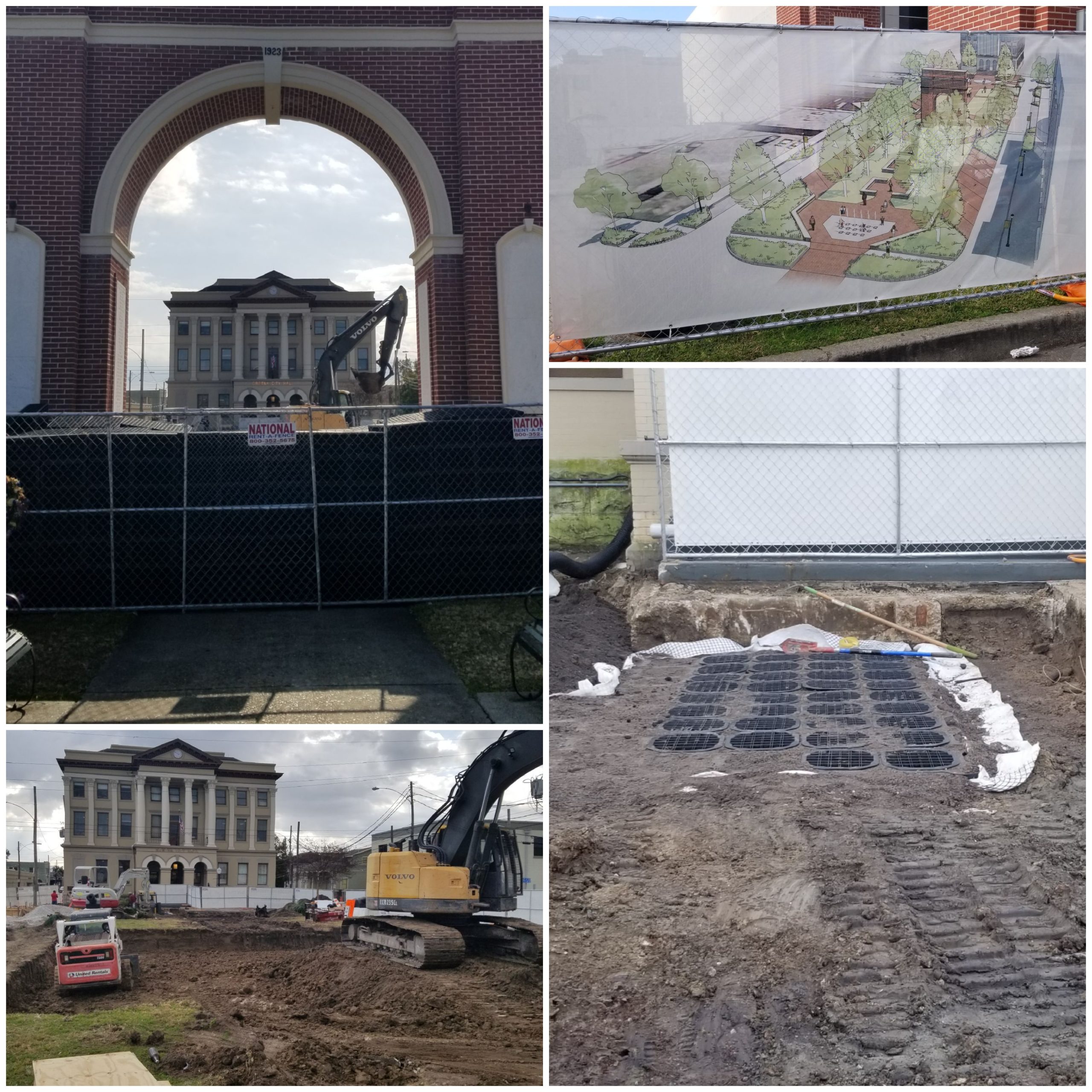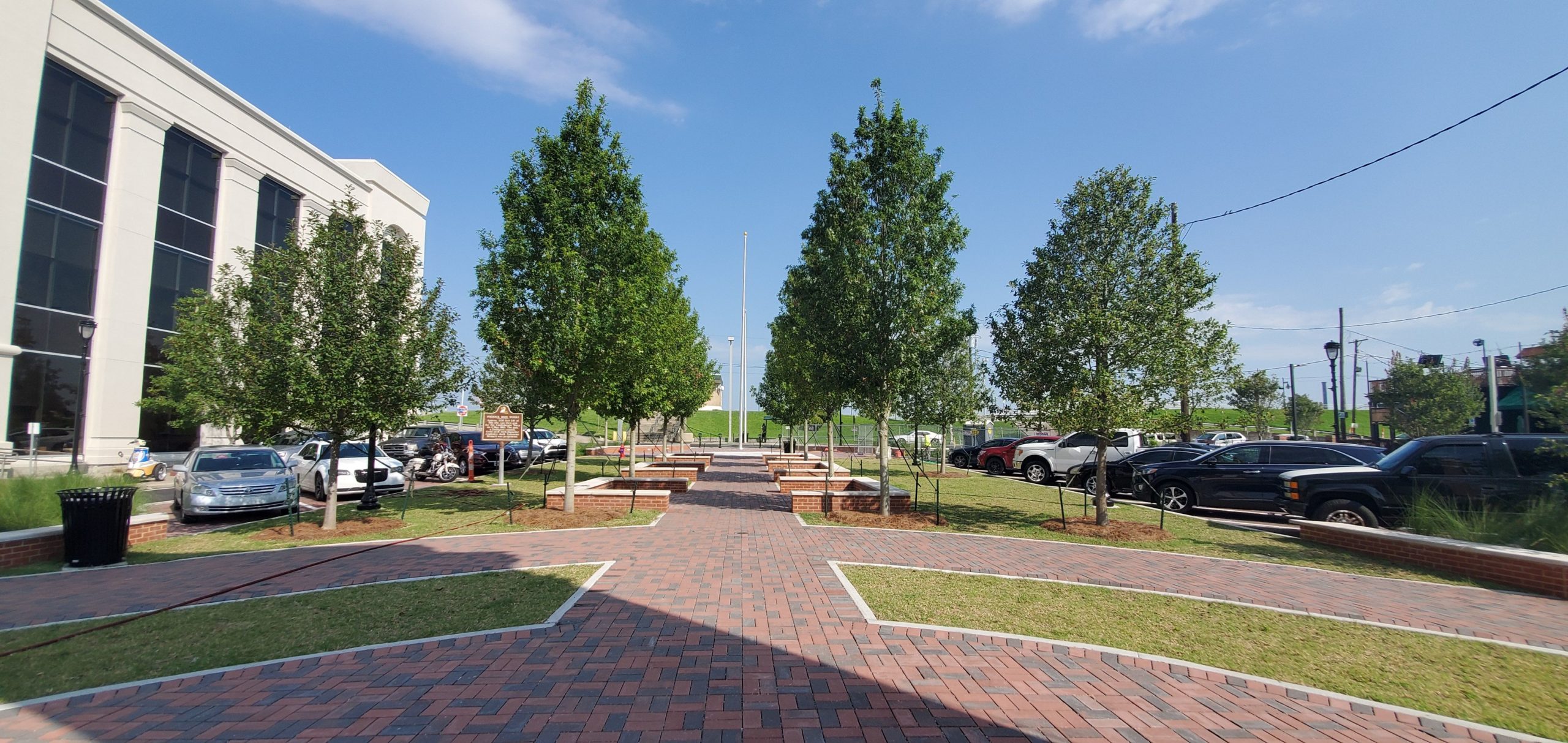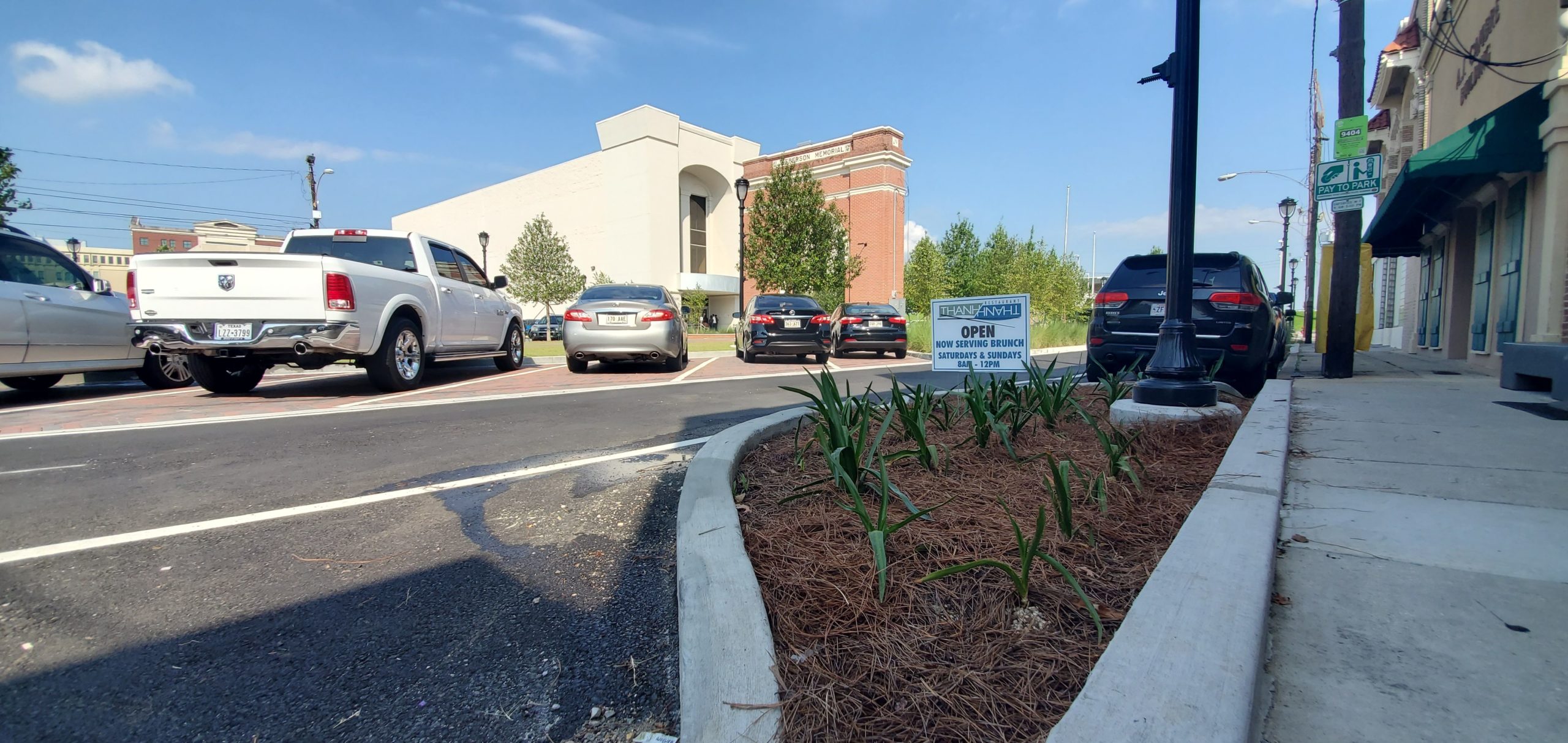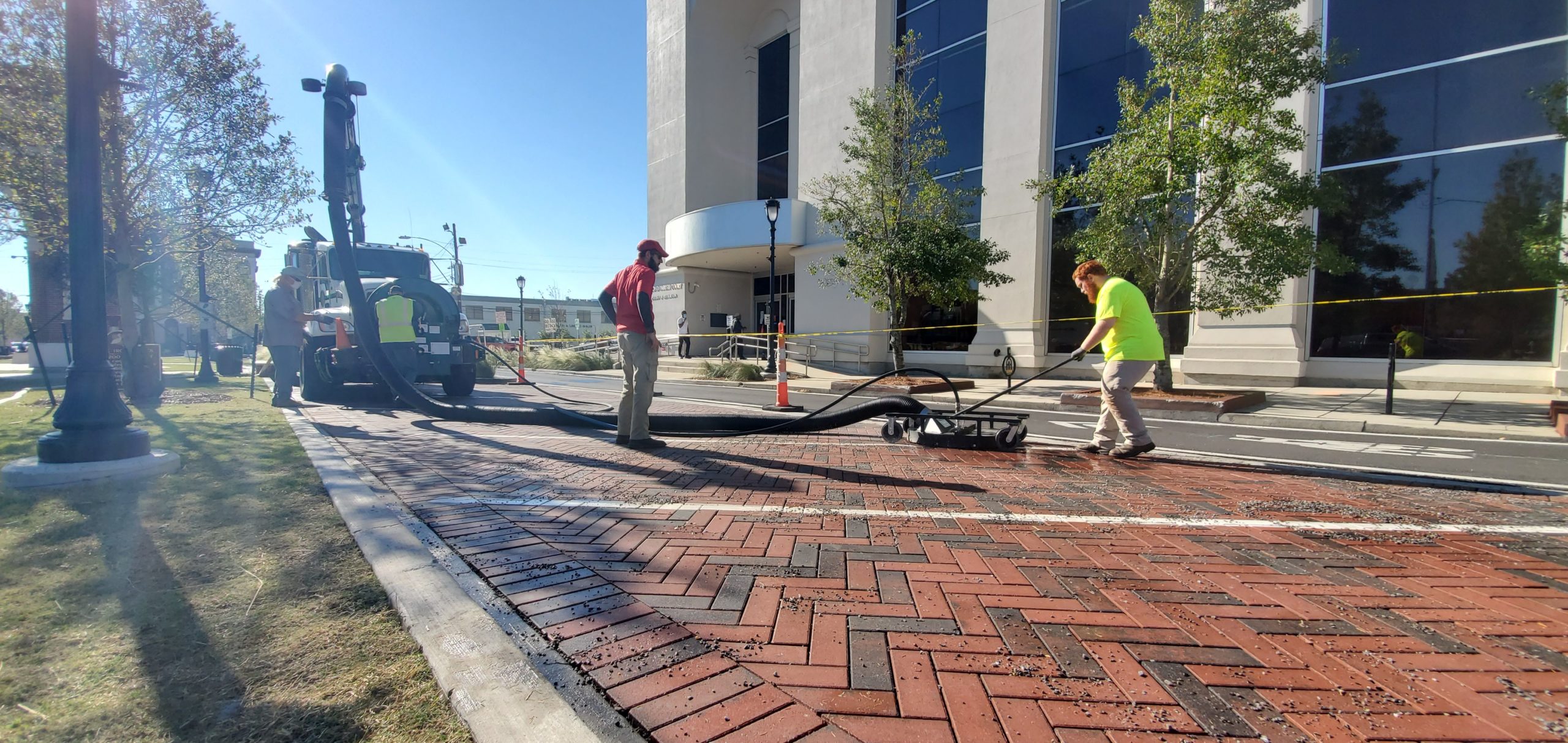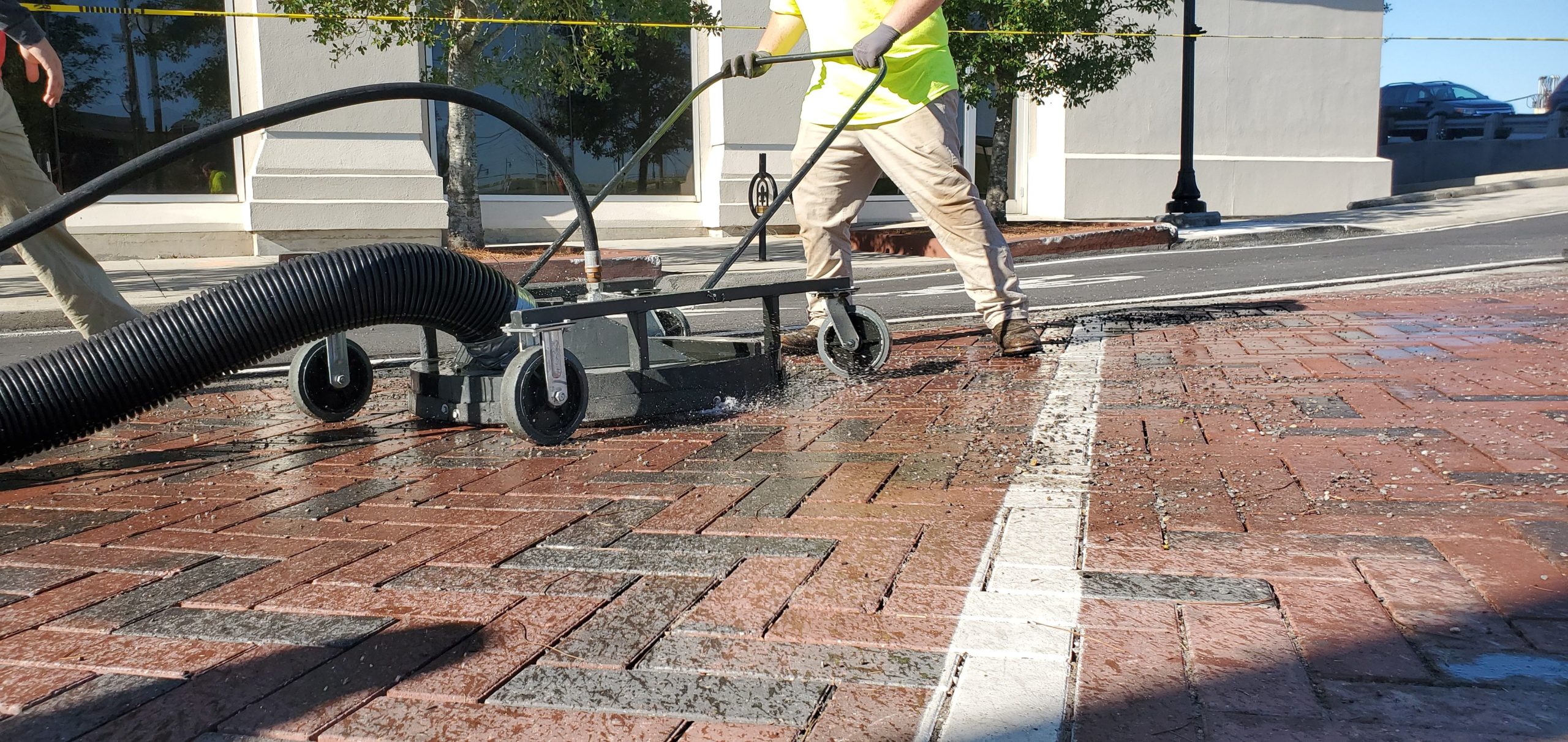
Multi-Function Stormwater Solution: Gretna City Hall
A Small Public Space Making a Big Impact
As part of an initiative to address localized flooding and improve pedestrian safety in Historic Downtown Gretna, Dana Brown & Associates lead the design and construction administration of an urban design project that transformed the public space just outside of Gretna City Hall. The project included the redesign of an open space located between north and southbound Huey P. Long Avenue, which feature numerous forms of green infrastructure, including bioretention, native plants, permeable pavers, underground detention and soil cells.
The multifunctional drainage design takes advantage of all the available hardscape and landscape areas. When rainwater hits the surface it either infiltrates into permeable pavement or flows to a bioretention cell, then it makes its way to an R-Tank stormwater detention system where it is temporarily stored. By stretching out that path that water must take prior to entering the storm drainage network, this project helps alleviate localized flooding by taking the burden off ageing infrastructure. The Strata Vault soil cells provide healthy, uncompacted soil for trees located next to the courthouse that are surrounded by pavement. While this application of soil cells doesn’t directly manage stormwater, it does increase the life span of trees and helps them reach full maturity. Since the trees have easily accessible soil, they can grow a larger canopy that can help catch rainfall before it hits the surface and provide ample shade for the citizens of Gretna.
The value Construction EcoServices (CES) provided to the design team and General Contractor, Rotolo Consultants, Inc. (RCI), doesn’t just end with the product selection, procurement and installation guidance. A great example of our value came to light at the end of the project. After the permeable pavers were installed, a load of sand was accidently stored on top of them. The fine sediment from the sand clogged the aggregate between paver joints, greatly reducing their infiltration capacity. The design team asked CES to investigate a low-cost solution to clean out the clogged sediment. Typically, permeable pavement maintenance can cost up to $1.50/SF, with a minimum cost of $3,000. Vacuum trucks are used for this type of maintenance, some operators can charge up to $3,000 for every 4 hours.
After we reached out to RCI to discuss possible solutions, we decided to team up with the City of Gretna and combine our maintenance vac head with their vacuum truck. It just so happens that the city had a truck capable of doing the maintenance and CES had the vacuum head attachment. RCI provided the labor force and within one day, the pavers were vacuumed, and fresh, clean gravel was installed in the paver joints. This took a team effort and all parties involved came together beautifully. Like the old saying goes, “many hands make light work”.
The City of Gretna took a stand and decided to become a leader in Green Infrastructure for Southeast Louisiana. There aren’t many downtown developments that use bioretention and permeable pavement as the first line of defense to stormwater management. This project is a testament to the value of collaboration in design and development, while showcasing that even a small project can have huge impacts on the community and environment.
